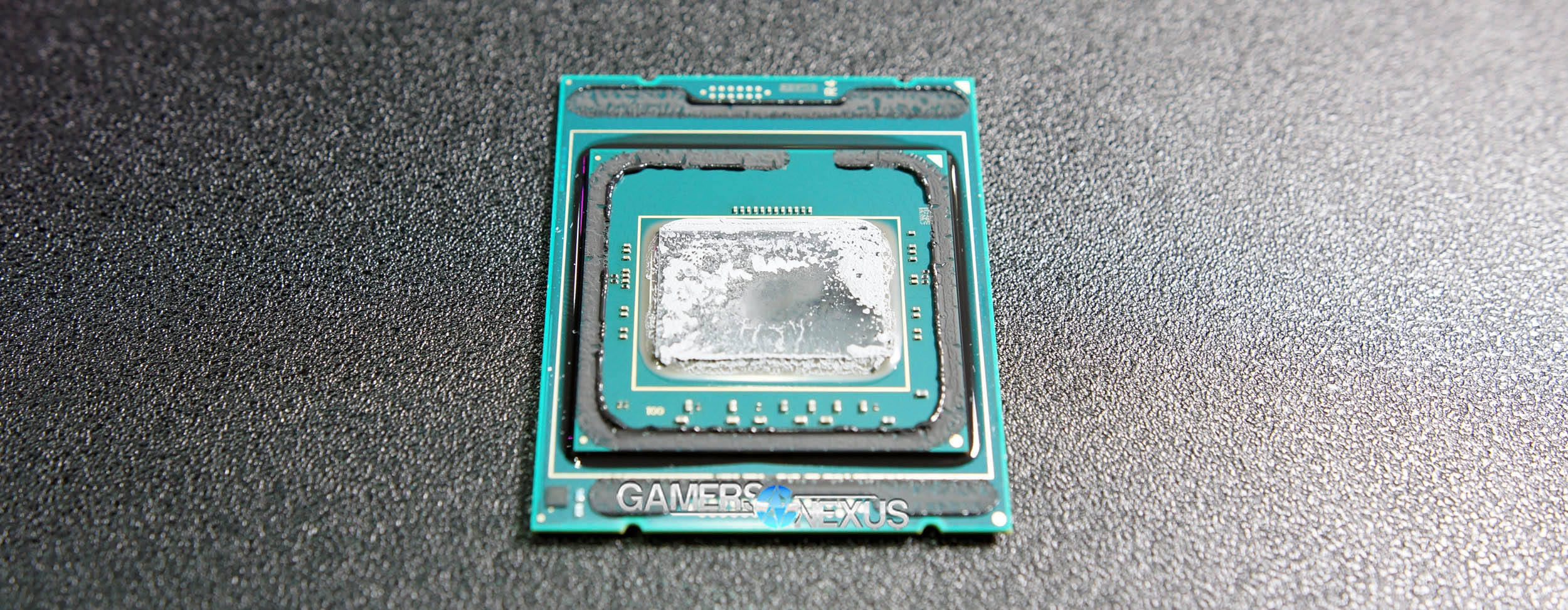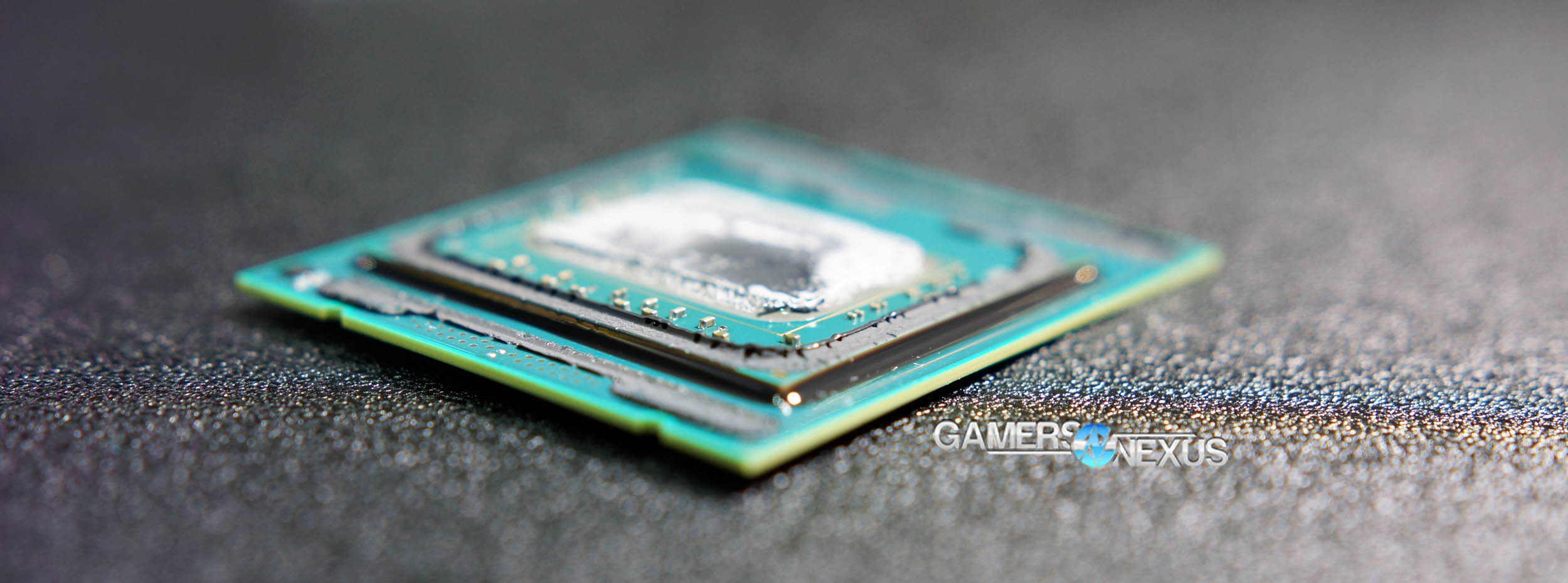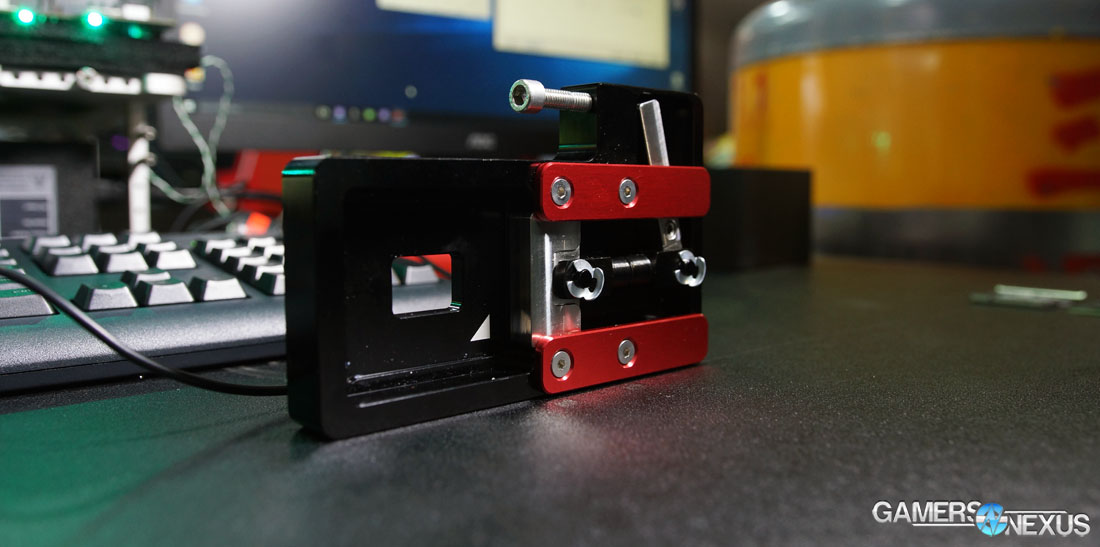Live Delidding of Intel i9-7900X & New RFID Chip on CPU Package (Ft. Der8auer)
Posted on
We ran into professional overclocker Der8auer at G.Skill’s Computex booth, who was keen to give us a hands-on delidding demonstration of a new 10C/20T Intel Skylake-X CPU. During the process, we also got our first real hands-on look at the CPU substrate and package – interesting in its own right – and underlying thermal compound choice. The lack of solder could have an explanation in chip longevity, something we’ll talk about a bit later.
This process involves Der8auer’s new delidding kit, an Allen wrench (looked like a 5mm wrench), and some force. Nothing difficult. The process is identical for both KBL-X and SKY-X, with the disclaimer that larger SKY-X CPU dies (like 14-18C chips) could pose some difficulties with extra capacitor density surrounding the CPU die. There’s much greater risk of damaging or destroying the 14C to 18C CPUs given this challenge, and although the 10C CPU was trivial, risk of damage is also present. SMD components sit close to the outer glue of the IHS, which means that delidding could potentially rip one of the SMDs off of the substrate. The SMDs on the sides of the CPU die are for memory channels, with the capacitor and RFID chip in the corner being less critical.
Delidding the CPU reveals that the substrate is stacked vertically, split into two layers. The elevated part of the substrate hosts the CPU die, which is a bit smaller in our photos than the 14C-18C dies. The Intel CPUs with higher core count will leverage 22-core dies that have been cut down.
As for thermal solution, it’s thermal paste from Dow Corning, which isn’t the best, but is reliable and will withstand hot/cold cycles without issue. The company’s reasoning for solder seems to be longevity, and they have a point, to some degree: Solder will struggle with rapid contraction and expansion of metals during extreme temperature swings, where thermal compound remains stoic and largely unaffected. That said, the concern of expansion/contraction of solder is largely relegated to smaller dies, which some of these new CPUs are not. Using thermal compound could be defensible, though thermal improvement is still tremendous when switching to soldered contact or liquid metal. And Intel has not been particularly good in the thermal department lately. Regardless, we're not clear on how much water the longevity argument holds.
Der8auer's delid kit -- currently in prototype phase.
There appears to be an RFID chip in the corner of the Intel i9-7900X that we looked at, which would lead us to believe that the chip is capable of storing user information. Der8auer’s theory is that this could be used to store user overclock data, e.g. maximum stable OC. Such a chip could also be used for RMA processes, theoretically.
View the video for a live delidding; otherwise, this gives you one of the first looks at a delidded Skylake-X CPU, the i9-7900X.
Editorial: Steve Burke
Video: Keegan Gallick


